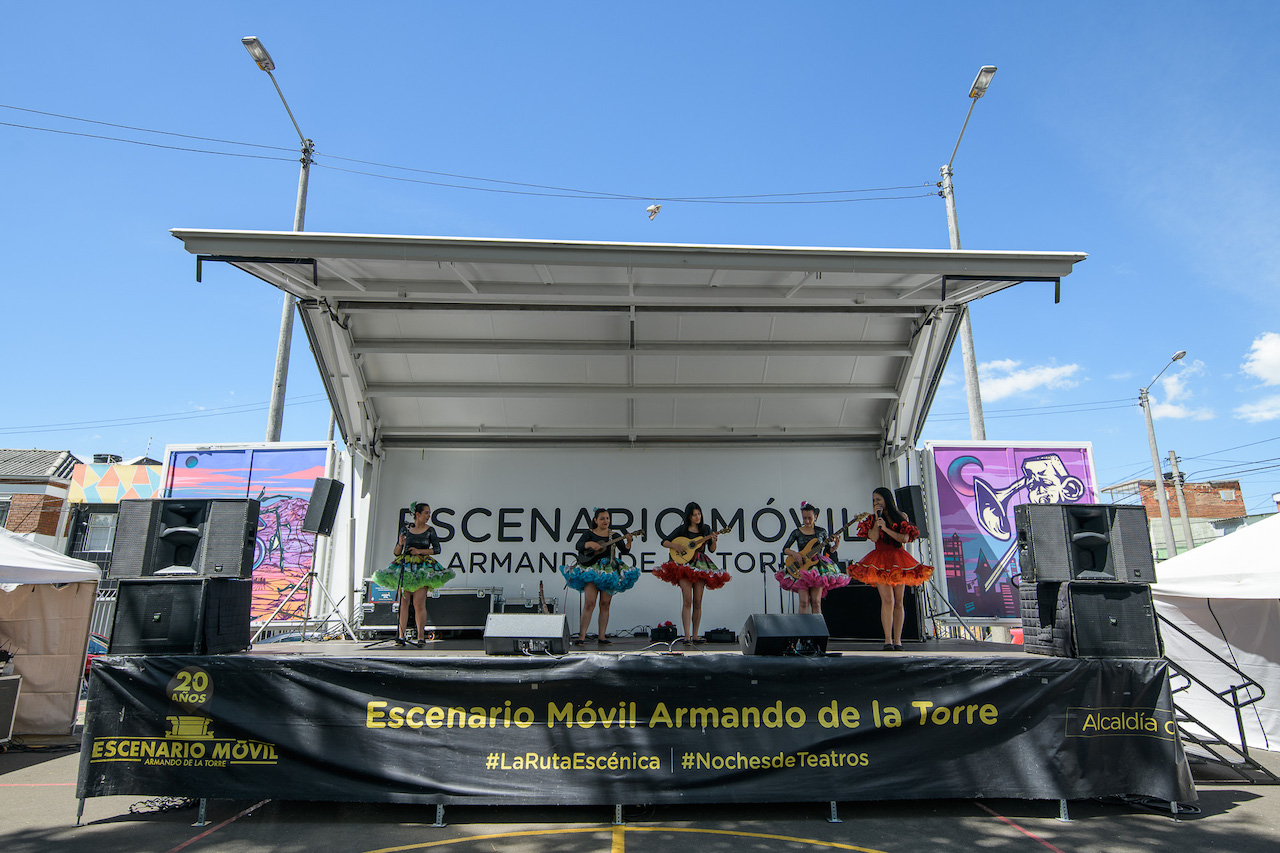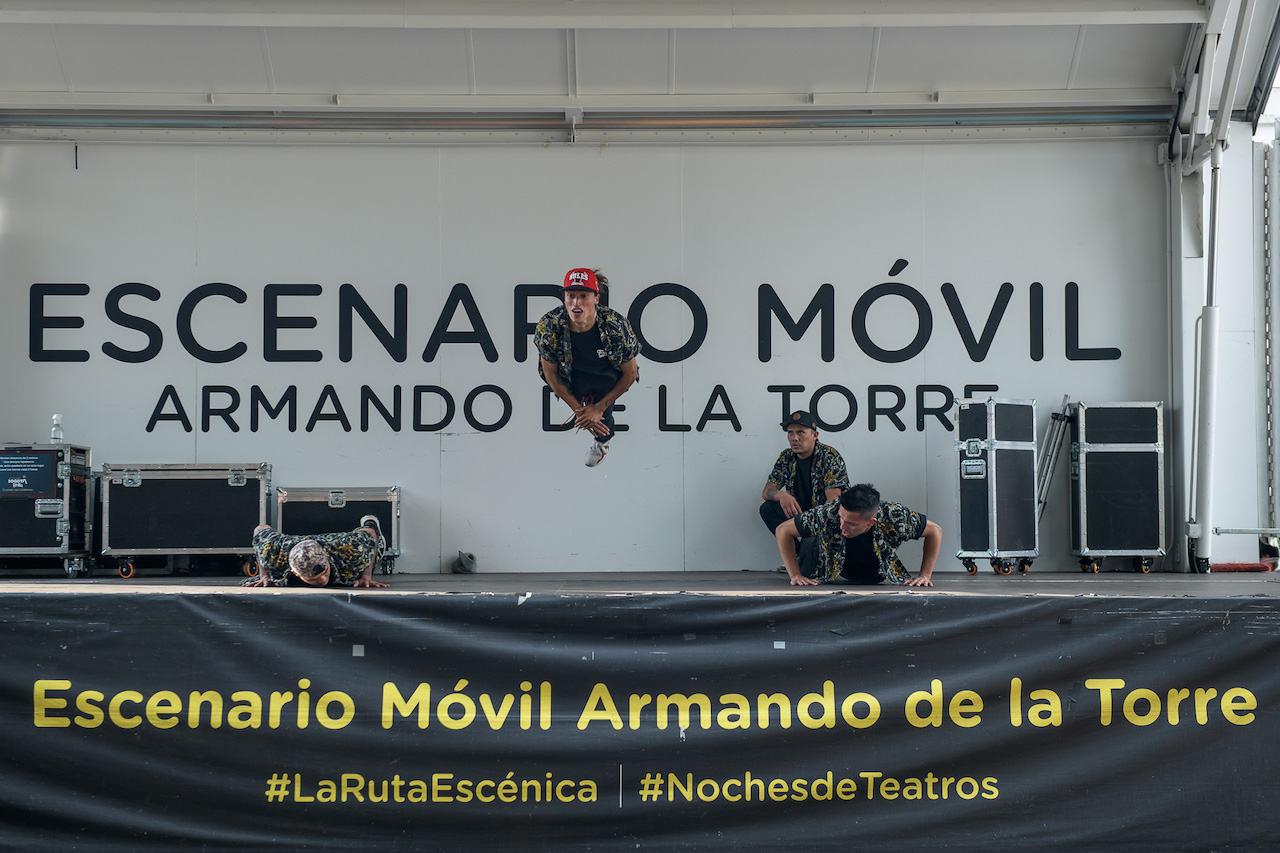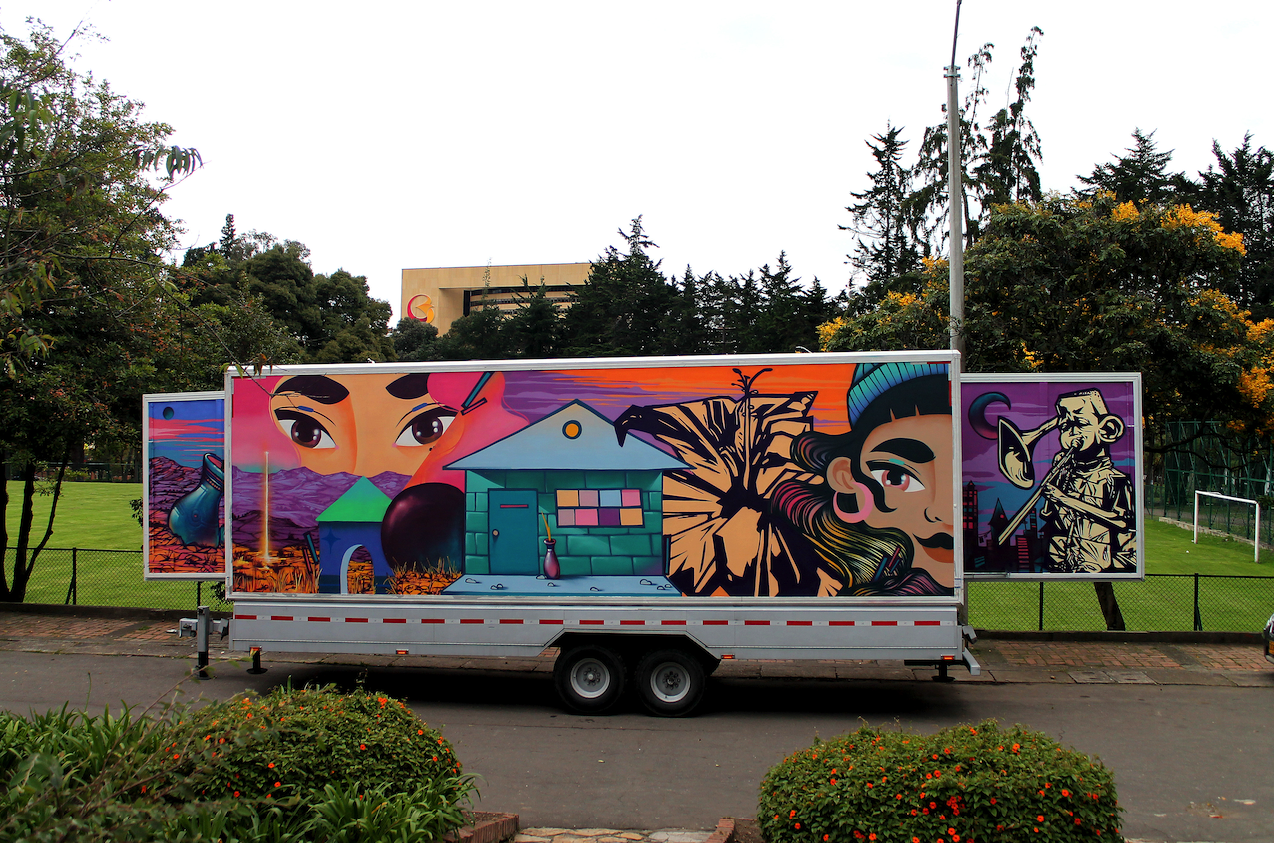
Bogotá currently has two moving stages. The Armando de la Torre Moving Stage (1999) and the María Mercedes Carranza Moving Stage (2021).

The Armando de la Torre Moving Stage was born in 1999 under the administration of Enrique Peñalosa, under the management of the stage manager Armando de la Torre. Since then, it has been managed by several entities; after the creation of Idartes, its acquisition was achieved, and a management scheme was implemented that made it possible to constantly use it as one of the city’s stages. In 2013, it was consolidated as a cultural venue with its own program, achieving the allocation of a budget that has made it possible to dignify artists and has guaranteed art and culture in movement. To continue with this stage model, in 2021, after several years of efforts, the María Mercedes Carranza Moving Stage was delivered to strengthen the presence of art and culture in the city.

Thus, the moving stages are part of the cultural venues of Bogotá, being the only ones with those technical specifications, which manage to provide a proposal for the decentralization of scenic practices and the plurality of art and culture in the city. In this way, they benefit thousands of citizens who do not have the possibility of attending the artistic presentations offered in theaters and halls at fixed points in the metropolitan area.

Its program has toured the 20 localities of Bogotá and seeks to meet the needs of citizens and artists with several proposals: Sessions of the Tower, which emphasizes the local artists of each of the localities; Mobile Culture for Bogotá, focused on bringing the different musical rhythms around the city; and Art, Footprint and Peace for Bogotá, which includes active community participation in each of the territories and involves groups led by reintegrated individuals, victims of violence, displaced people, recovering street dwellers, among others, generating new opportunities and spaces where dialogue, peace and reconciliation are mobilized through art.
The moving stages are cultural venues arranged in the city to strengthen the circulation of artists, so that this stage is mobilized in response to its dynamics and proposals in the redefinition through art in the territory of each locality.
